I don’t usually think of the Ford Maverick as a truck. That’s not a slight; in fact, it’s a compliment, because what I do think of it as is a very capable and affordable do-anything sort of vehicle. The idea of the Maverick excites me the most when I think of it in its cheapest hybrid form ($25,315), because it is an inexpensive five-seater, four-door vehicle that gets 37 combined mpg and has out back what you could treat as, with a tonneau cover, a massive trunk or, open, a usable if short truck bed. It’s a Swiss Army knife sort of machine, something you could take into almost any unknown situation and find that you’re pretty well equipped to handle whatever happens. It’s a vehicle I happily recommend to people who want something inexpensive and useful for a huge variety of use cases. Deep down, though, I think it still is a truck, fundamentally, or at least wants to be, so I figured it was time to do a sort of review on the Maverick that’s a bit more focused. Specifically, how is it at doing, you know, truck stuff?
What do I mean by truck stuff? Great question, disembodied voice; help yourself to some canapés. I think for this test there are two basic defining truck things I want to focus on, two of the most utilitarian things that also tend to be the two things that people who don’t own trucks tend to ask people who do own trucks to loan them those trucks to do: move items that are not the sorts of things you’d want in the interior of your normal car and move huge items that simply won’t fit in your normal car.
These also happen to be the two categories of tasks that I tend to do when I use my own truck, the 1989 Ford F-150 David got for me a while ago, and it is very much A Truck, and it has a name, The Marshal:
I often use The Marshal to haul crap and tree limbs and other forgotten detritus to the dump, and I often use it to haul my advanced personal watercraft to the lake, the HMS Terror:
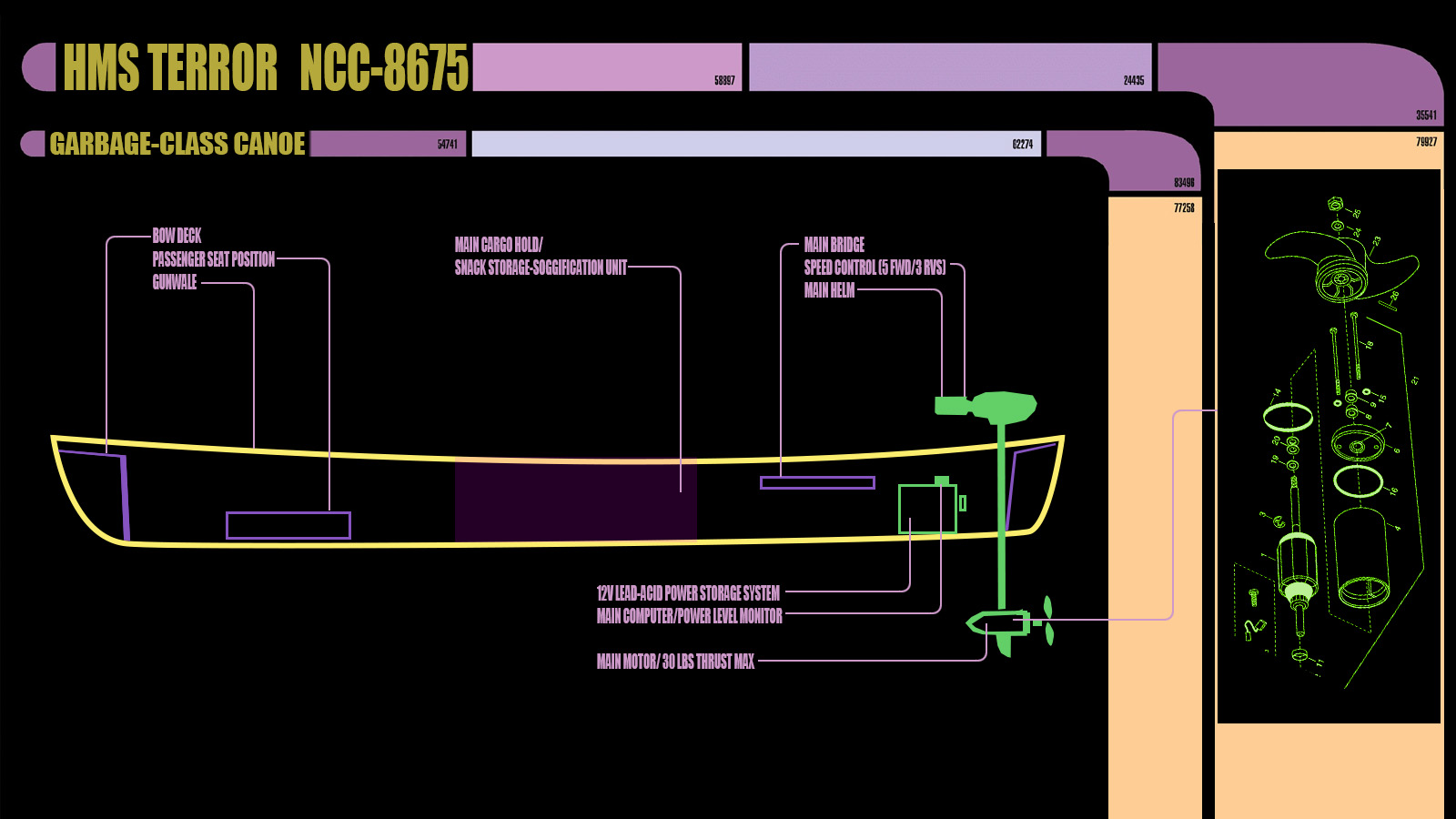

Yes, it’s my shitty canoe. It’s probably worth noting that I used to haul my shitty canoe to the lake on the roof of my Nissan Pao:
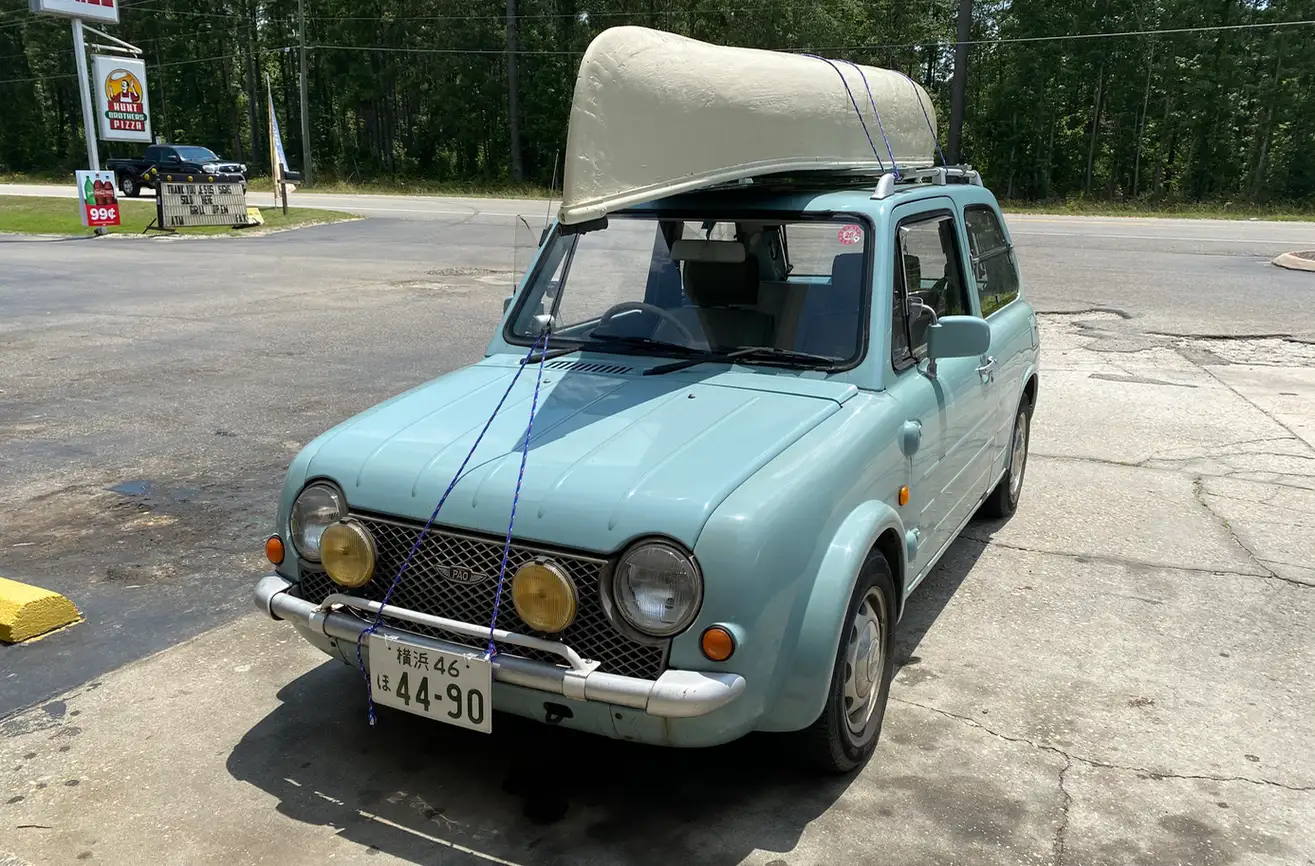
…so technically you don’t actually need a truck to do this, but the process of getting the canoe on the Pao’s roof and tying it down and then stashing all the lifejackets and other gear was all kind of a colossal ass-pain, and just shoving the thing in the bed of the F-150 has made life vastly easier.
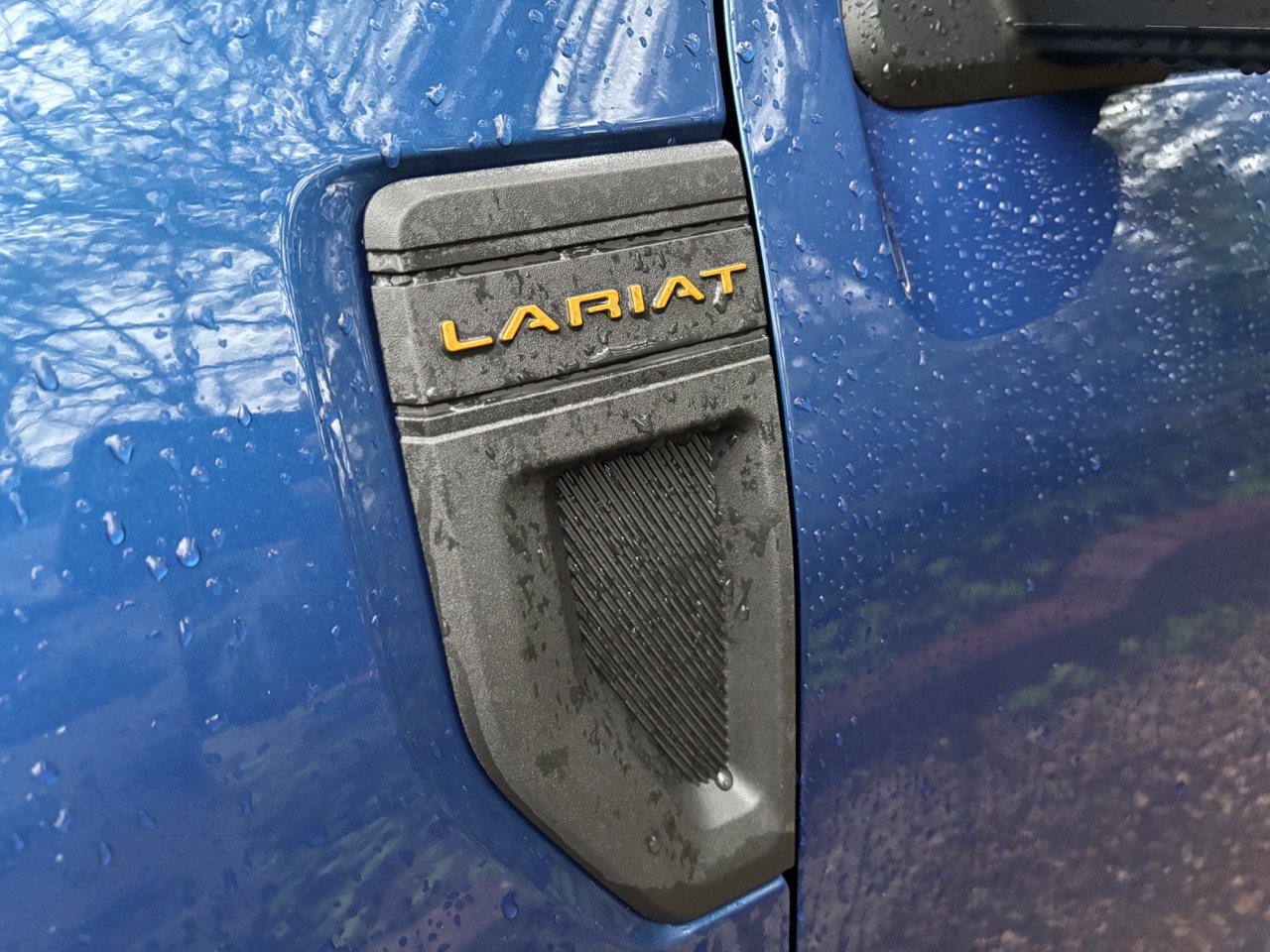
I suppose I should mention that the Maverick that was kindly loaned to me was a Tremor edition one. Well, to be even more specific, the one loaned to me was the most expensive Lariat trim level, with the 2-liter Ecoboost engine making 250 horsepower/277 lb-ft of torque, bolted to an eight-speed automatic, and with the Tremor package that gives “advanced” AWD and a one-inch lift with slightly better breakover, departure, and approach angles, along with better tires and a bunch of decals, all for an extra $3,495.
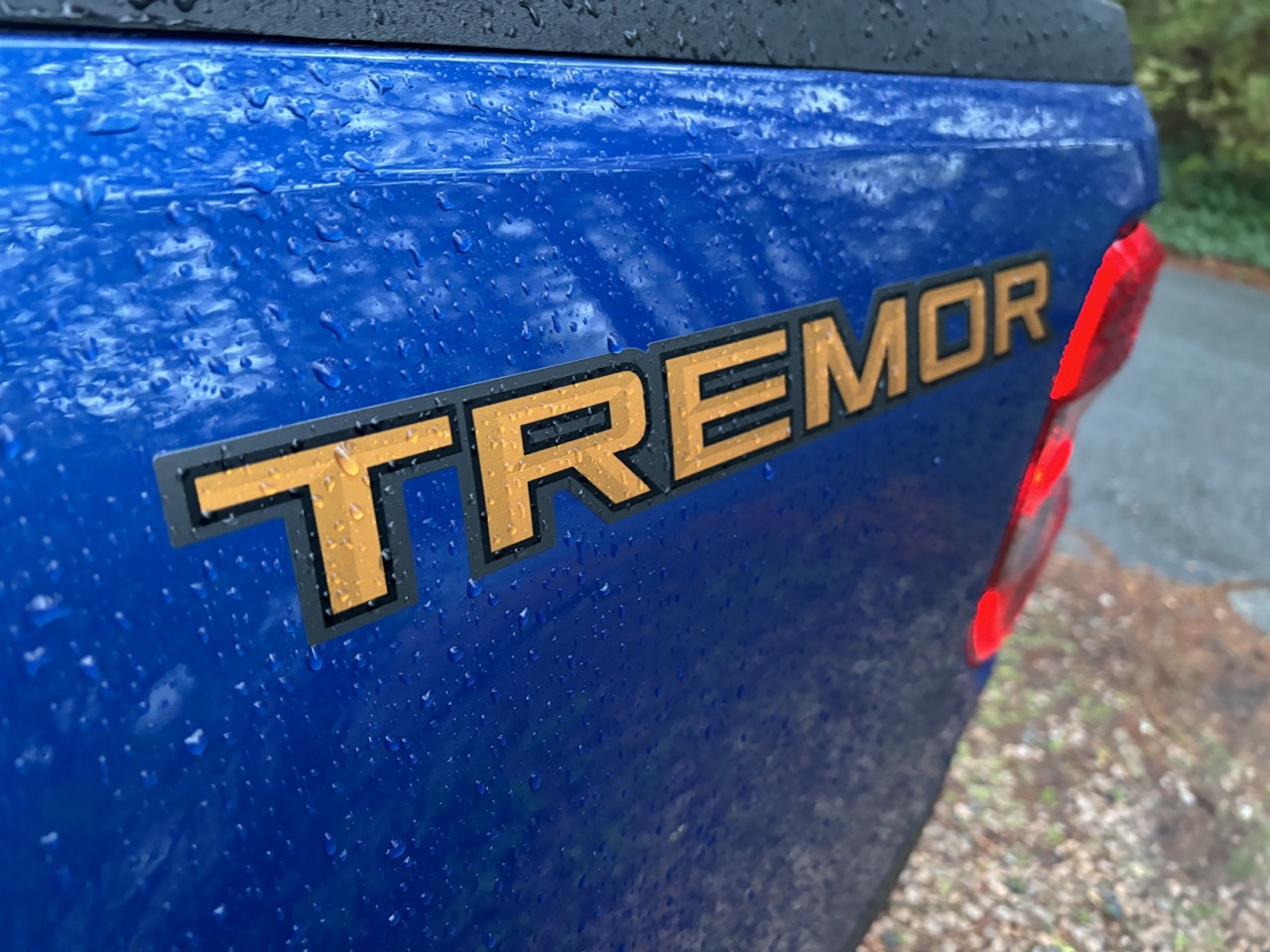
I really don’t care about the Tremor package in the context of this review. The name never fails to make me picture old people with very shaky hands, or perhaps a mild earthquake, and, really, if intense off-roading was my goal, I don’t think this is the vehicle I’d choose, Tremor-ized or not. From what I’ve read, it does just fine for mild off-road use, but if you want a rock climber or a serious off-roader, this really isn’t it.
I do like the bits of orange trim the Tremor package adds, though, like in the grille bar that incorporates the turn indicators and the tow hooks:
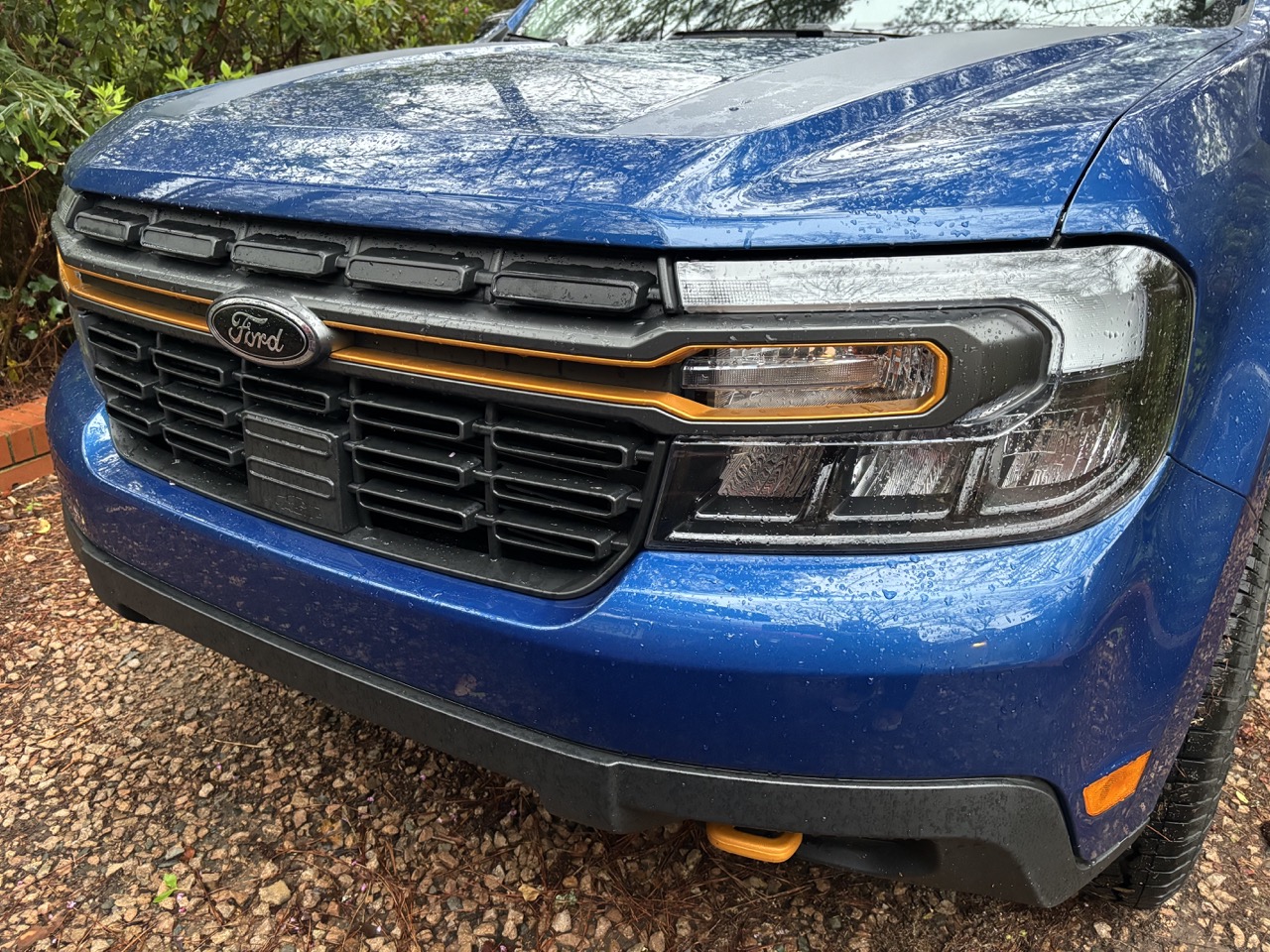
Beyond that, though, for the purposes of what we’re discussing today, we can ignore all the Tremor stuff; this review is valid for any Maverick.
Okay, so let’s get to it, and see how it does with our two key truck tasks!
Task One: Hauling Crap You Don’t Really Want Inside Your Car
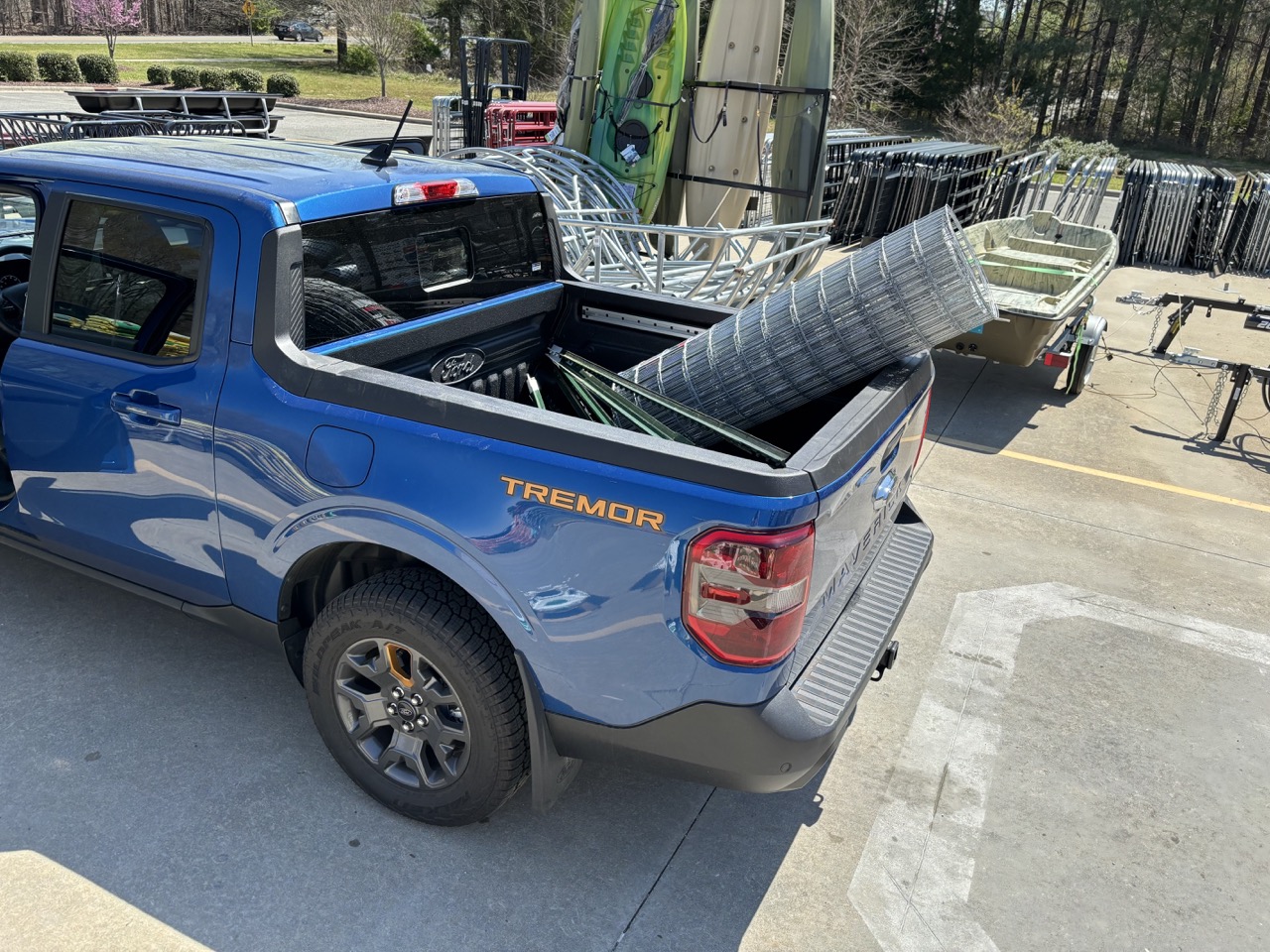
There’s two main categories of crap you don’t really want inside your car: crap that is filthy in some way, or crap that is destructive in some way. In the filthy category, this can include brush or tree limbs or gravel or mulch or 140 pounds of creamed sturgeon, unbagged, or trash or whatever. Anything that would normally require you to, if you had it in your trunk or SUV, spend too much time with a vacuum and some paper towels getting everything decent again.
The other category is stuff that, if shoved in the trunk or back of your SUV, would tear up headliners and seats and carpet. The stuff I decided to haul to test fits into this category.
I have a roughly 9-month old puppy who is almost as big a full-grown dog named Juno. Juno is half Husky and half Australian Shepherd, a pretty intimidating combination for someone like me who is more used to dogs that are sweetly and pleasingly stupid. Juno is both smart, and, because she is still a puppy, a dummy.

She’s very sweet, but she makes some really terrible decisions, and because she’s surprisingly clever, can usually make those terrible decisions happen. The most common of these is figuring out ways to escape the house and yard. I’m pretty sure I saw her working a combination lock at one point.
Anyway, I needed to shore up some fencing in her backyard romp-about area, so I went to Tractor Supply Company (who should just become a damn sponsor for us by now) to get a big roll of fencing and metal fence posts. These are heavy, bulky things with sharp, scrapey edges that would turn upholstery and carpet into a shredded mess that looked like a few cats got drunk and started to discuss politics, and things ended in pawticuffs and clawticuffs.
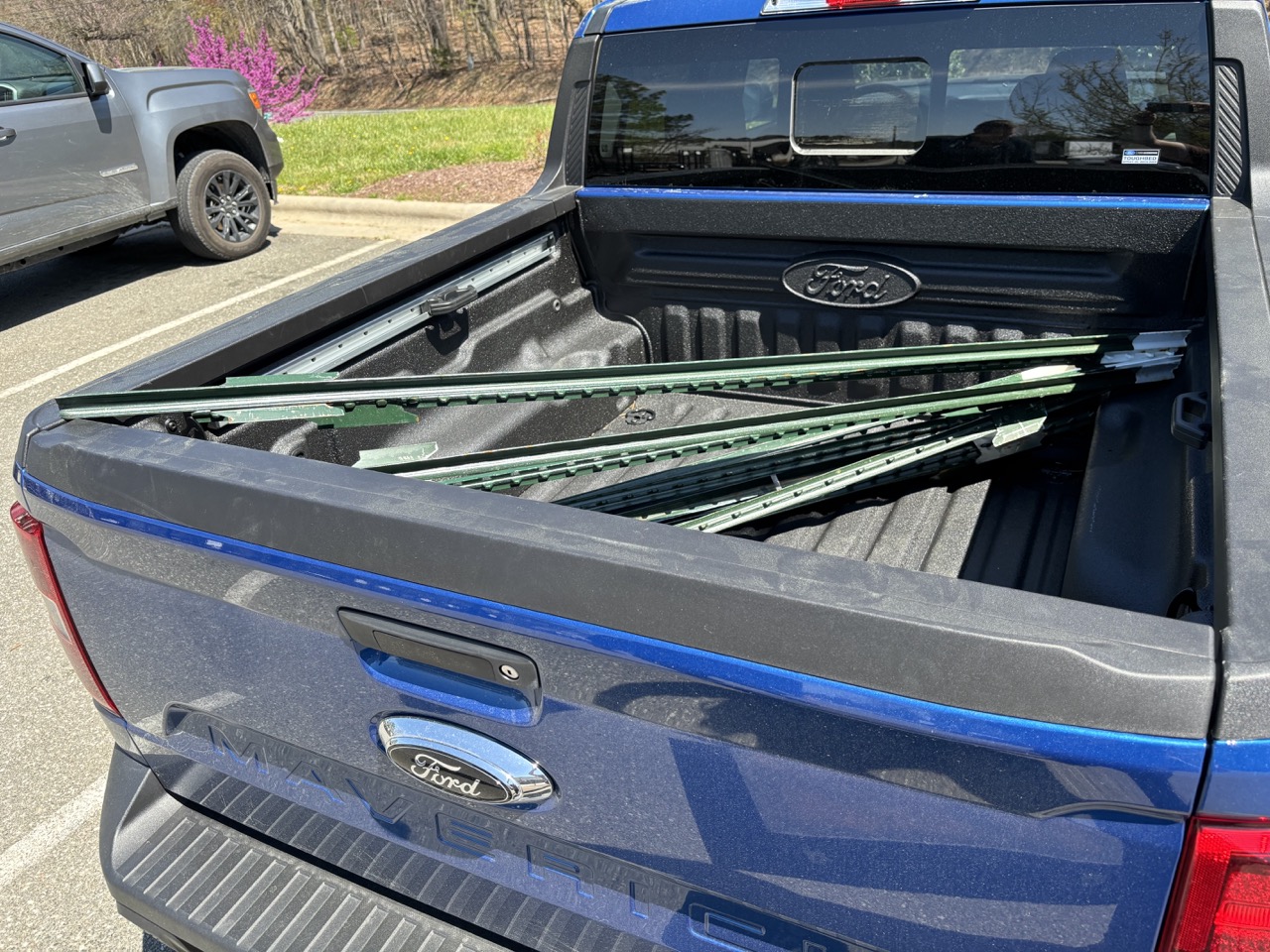
In this context, the Maverick did just fine, despite the short bed, because even if the bed is short, it’s still well-designed, and the bedliner material is rugged and effective at taking abuse. Those posts had to go in diagonally, which was fine, and the plastic edging on the lip of the bedsides proved useful as well, doing a good job of protecting the paint.
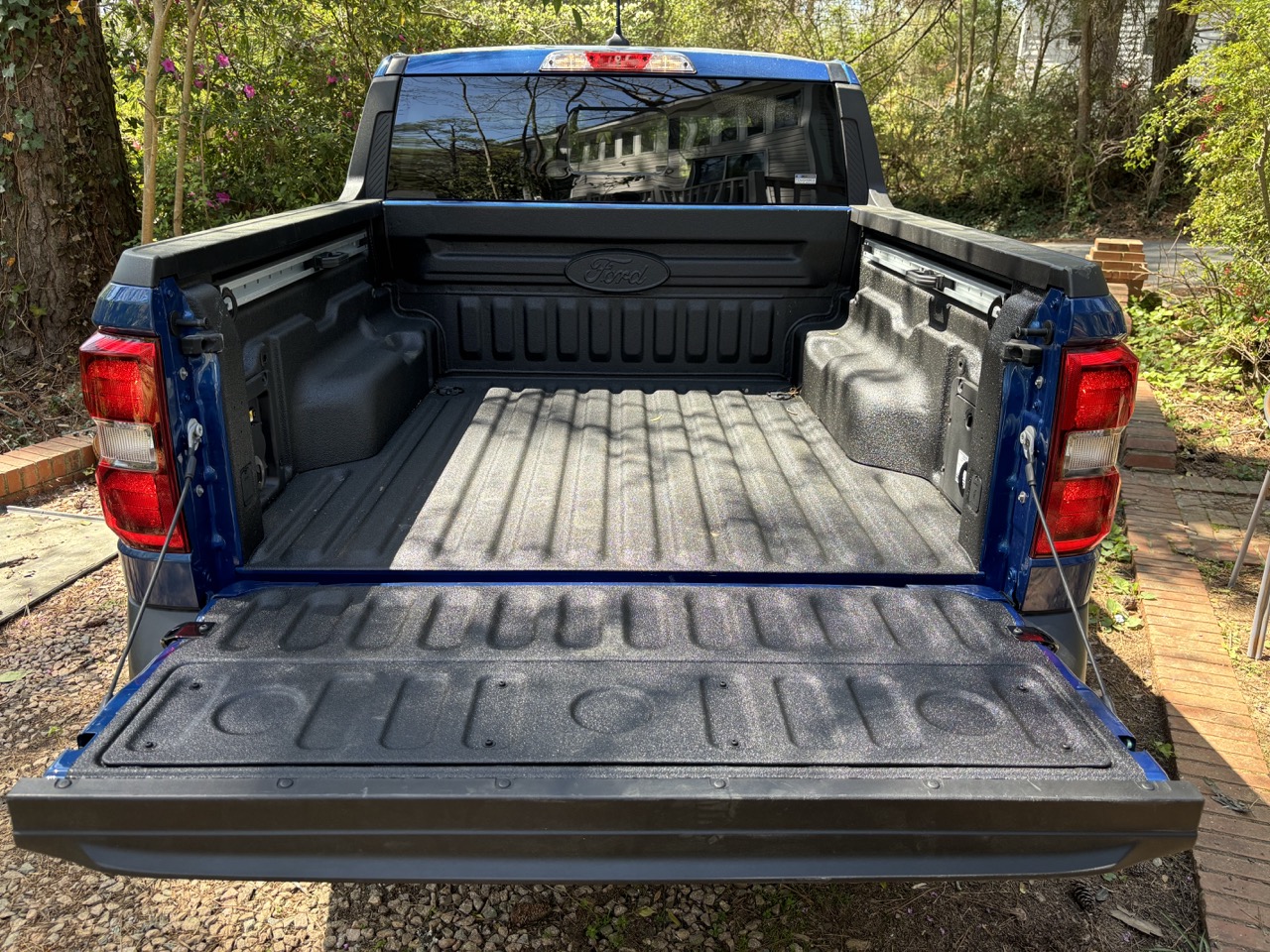
The bed has a number of considerations taken to help maximize the available space. The humps over the wheels are both squared-off to allow things to be placed on top of them easily, and there’s notches in there to accommodate a 2×4 laid side-to-side to act as a sort of shelf. If you’re hauling long sheets of plywood, the tailgate is designed to be propped at an angle to keep the sheets nicely level.
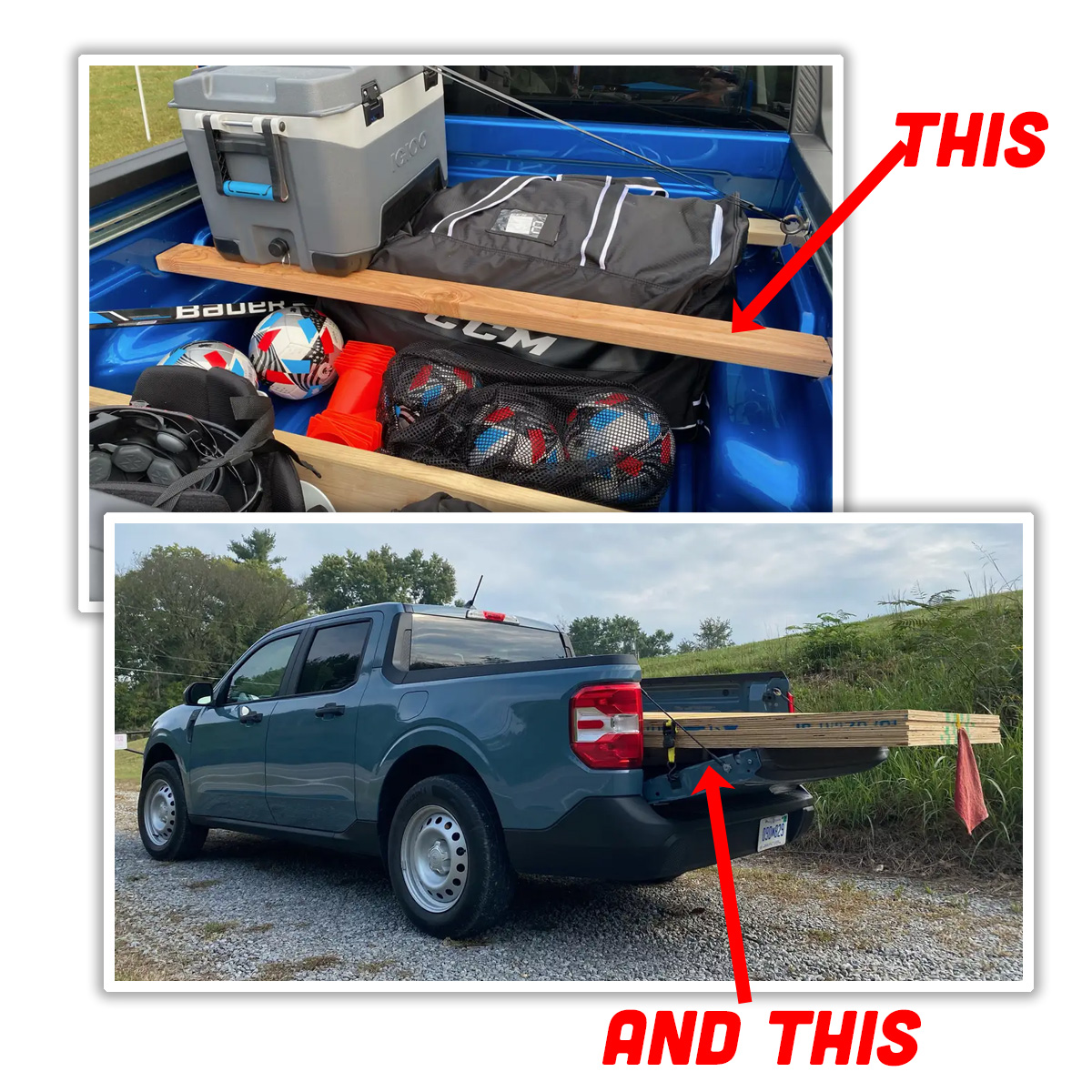
So, yes, it’s a short bed, but it’s thoughtfully designed and has a nice, tough liner, which makes it generally quite good at the basic truck function of hauling sloppy or destructive things. The bed also has a couple nice convenience features like a panel with a light and a standard 120V wall-type power outlet connected to a DC-to-AV inverter, and another cubbyhole that can store things and has a 12V power pigtail right next to it so you could use it for something that needs power, like a compressor or margarita maker.
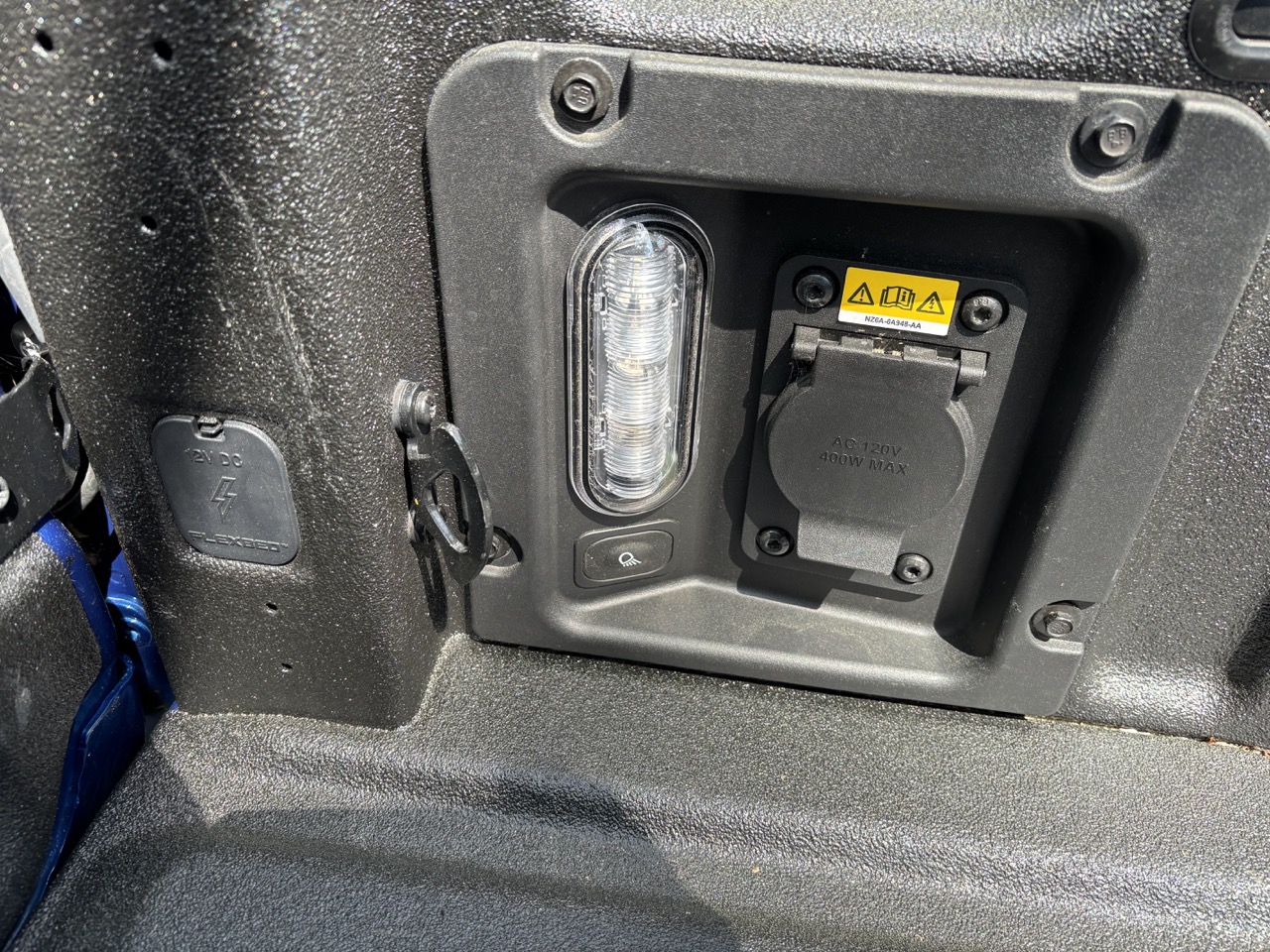
Here’s the compartment, and the 12V leads are in that little panel to the right: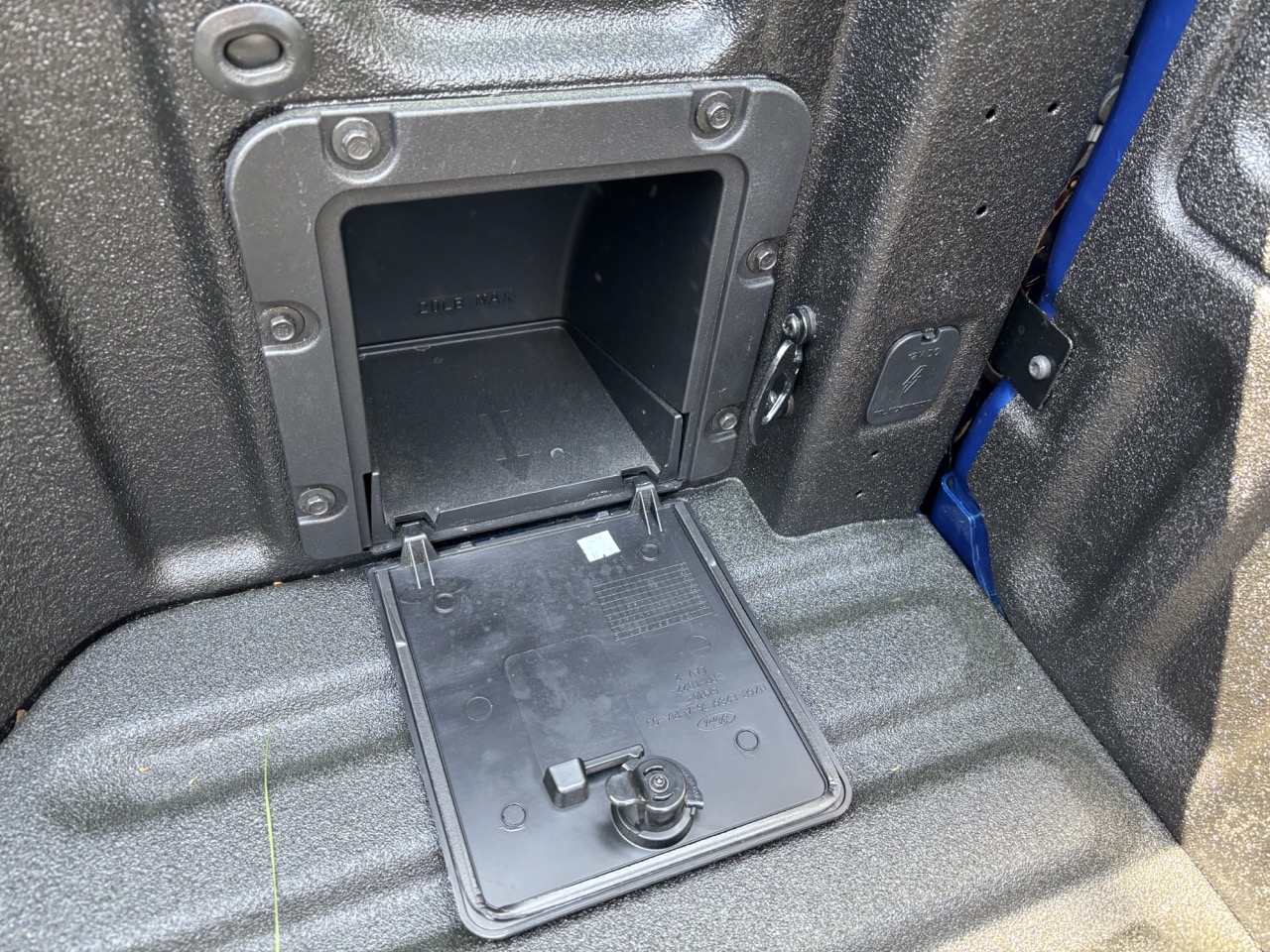
The Maverick works pretty well as a truck for the hauling messy/damaging things function, and that’s a very common truck use. You may not be able to get the volume you’d get with a full-sized bed, but for many people’s demands for this kind of thing, the Maverick can pull it off just fine.
Before I get into the second Truck Use, there’s two interior details I want to point out. First, these door handles:
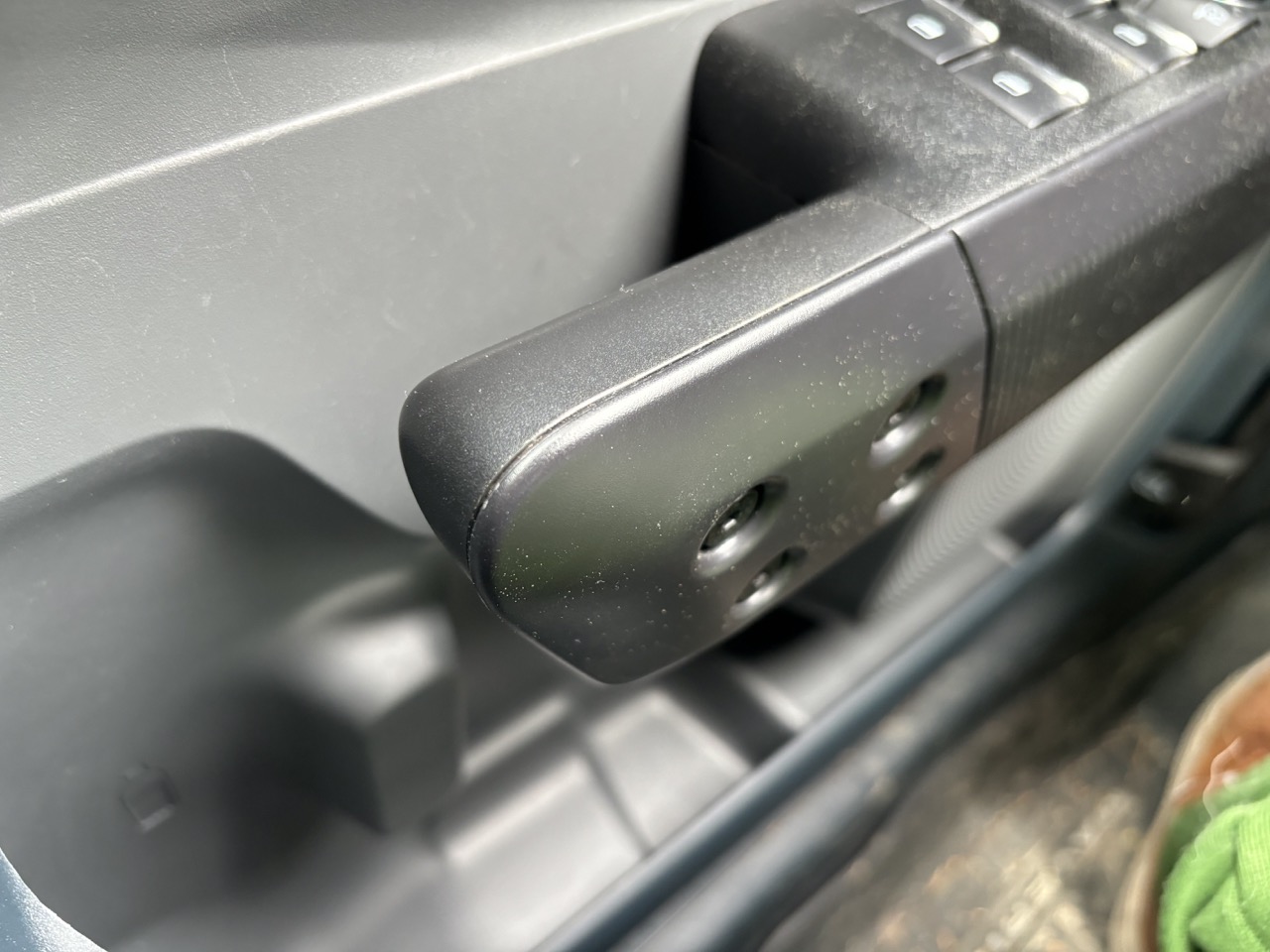
I don’t mind them at all, but a number of people who got in the truck were baffled by or just uncomfortable with their use. I think the open-endedness is just not what many people expect out of an interior doorhandle/armrest? Again, it didn’t bother me, but some passengers were really off-put by them.
This next one, though, did bother me:
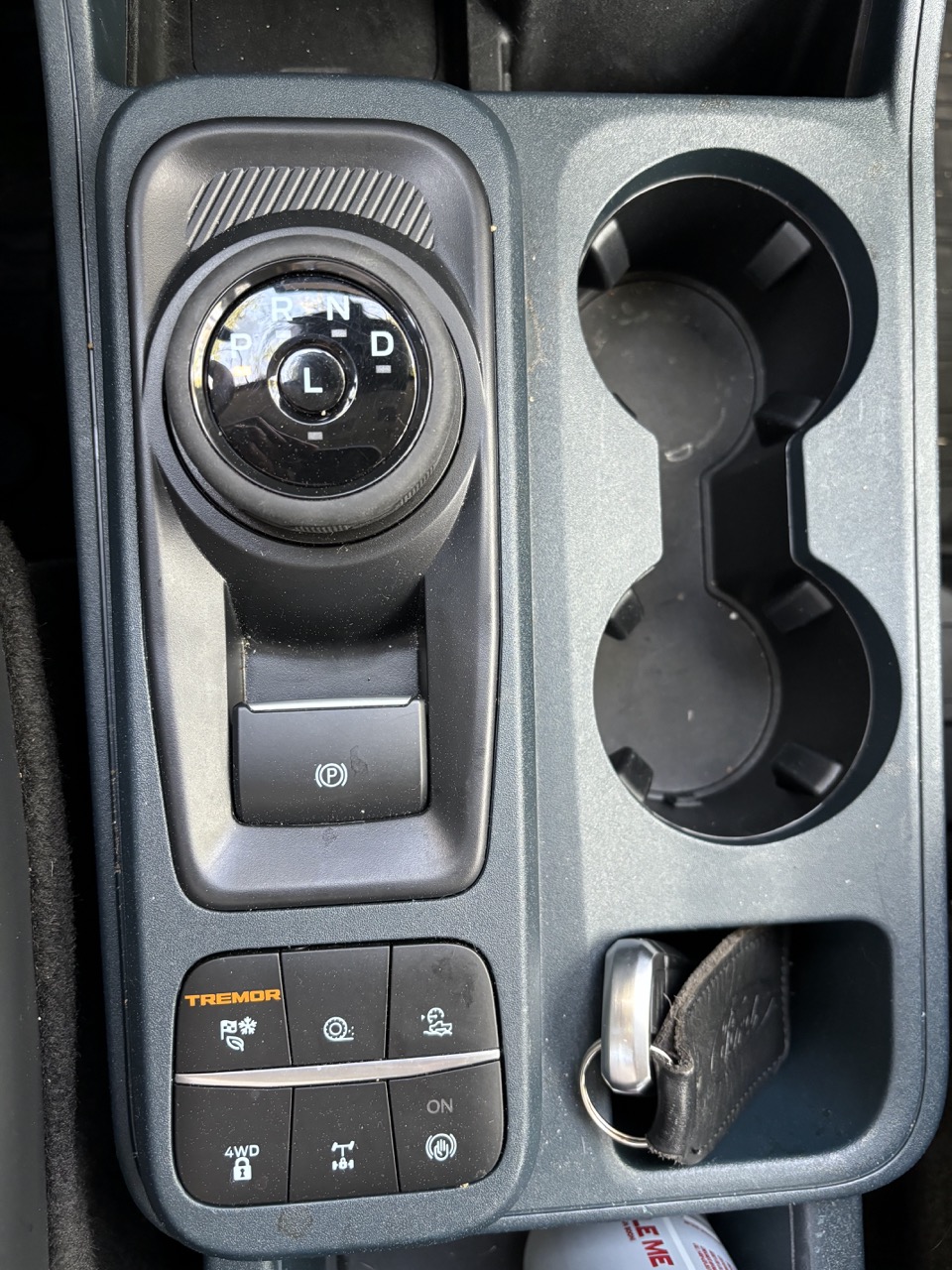
This rotary shifter is dumb. It just wastes space. If there was ever a good context for putting a column shifter on a car, this is it. Stick the PRNDL on the column, and free up all that space for another cubbyhole or something, anything. It’s just silly.
Okay, back to Truck Things!
Task Two: Hauling Really Big Things
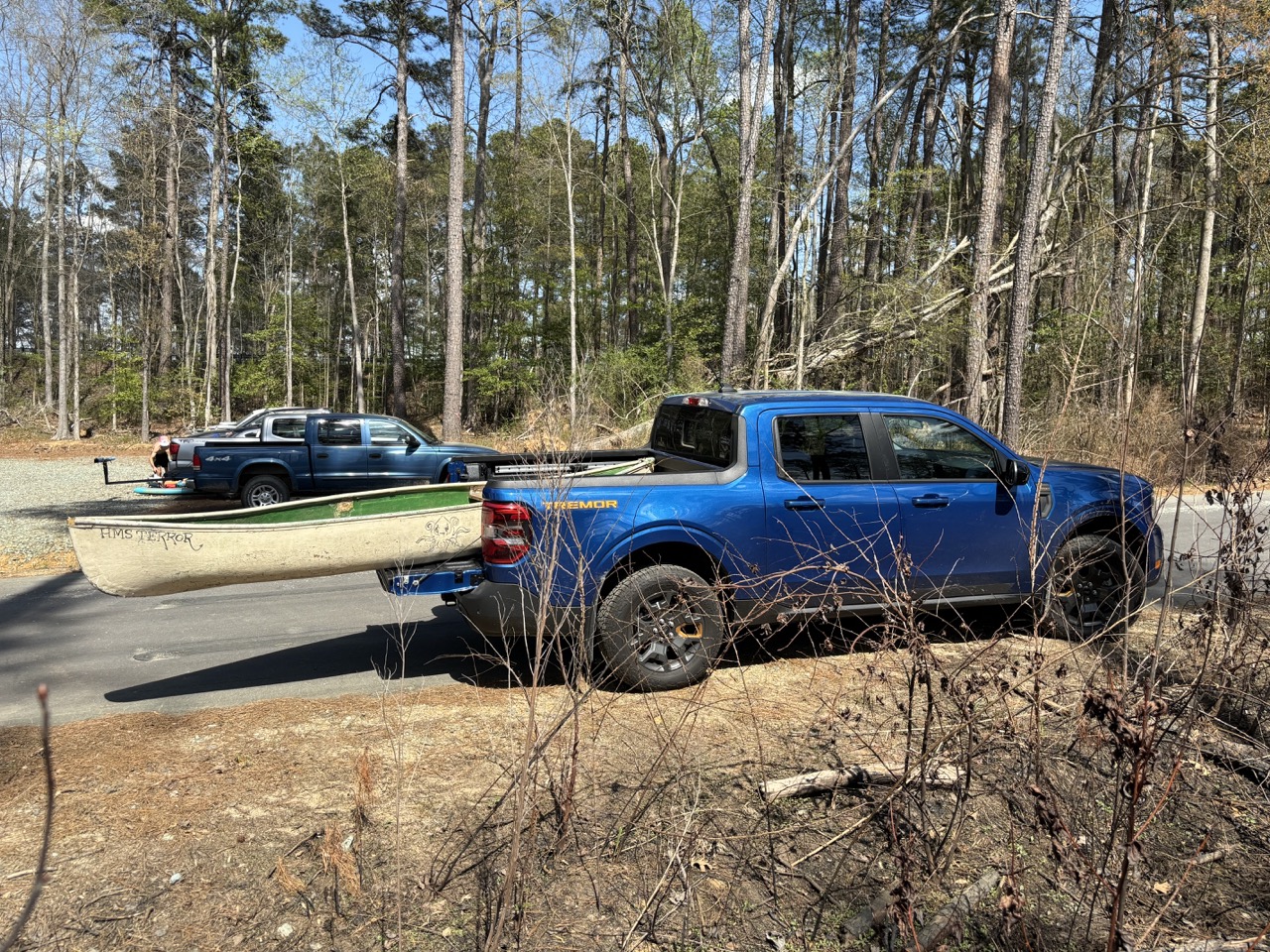
Alright, now we get to the tricky part, hauling the HMS Terror. The Terror is not a particularly long canoe, I think it’s about 12 feet long, but a 12-foot long object is still a very long object to move around. I mean, it’s two six-foot party subs, just less tasty but more water-tight. The Maverick’s five-foot-something long bed is less than half the length of the canoe, so it’s not exactly ideal.
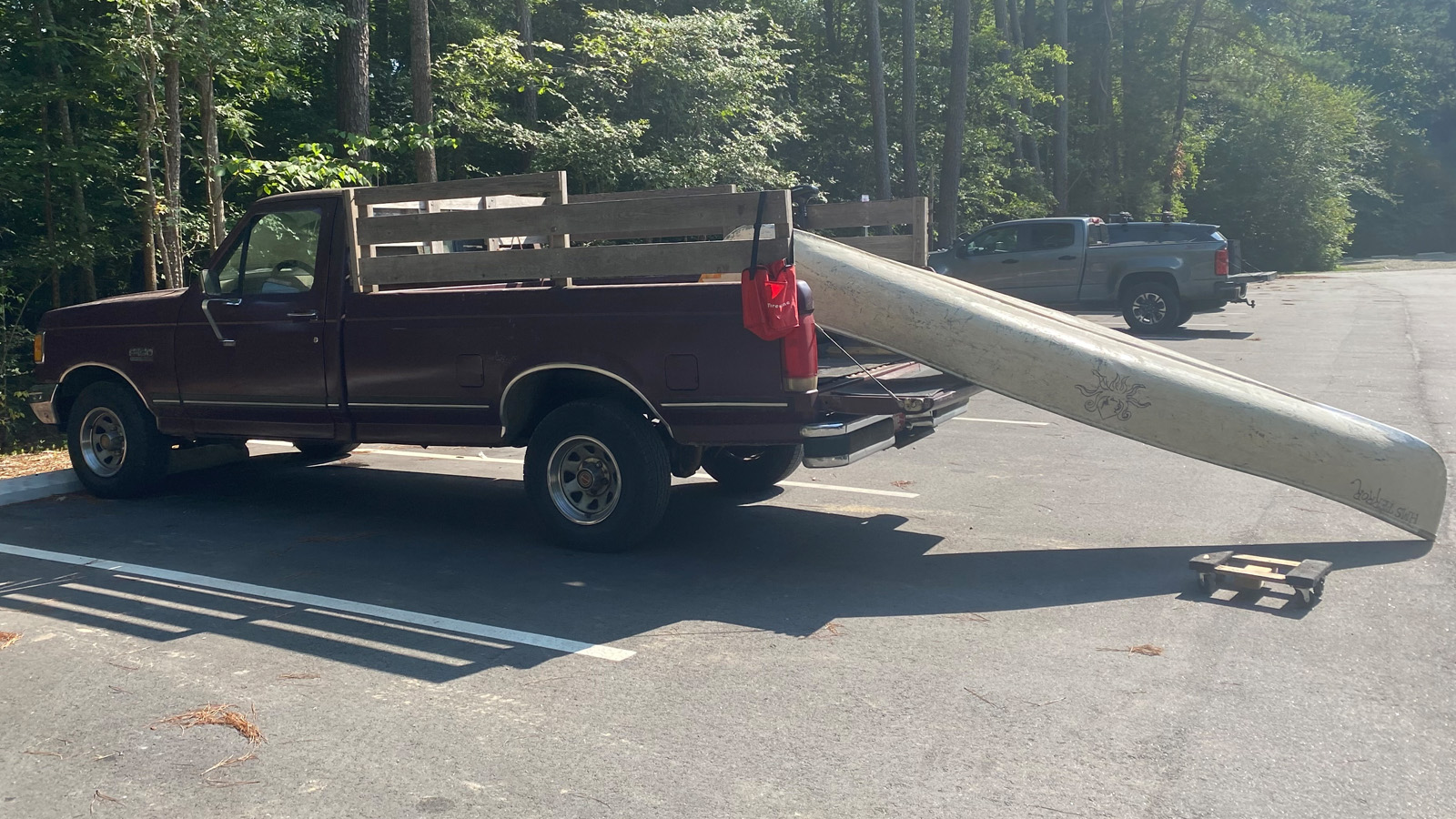
Normally, in my old F-150, the canoe fits mostly in the bed and rests propped up against the tailgate, sticking out maybe a foot or so, not much at all. I don’t need to tie it down, because there’s no way it’s just going to fly out of the bed, since 90% of it is fully within the bed as it is. With the Maverick, it’s a very different story.
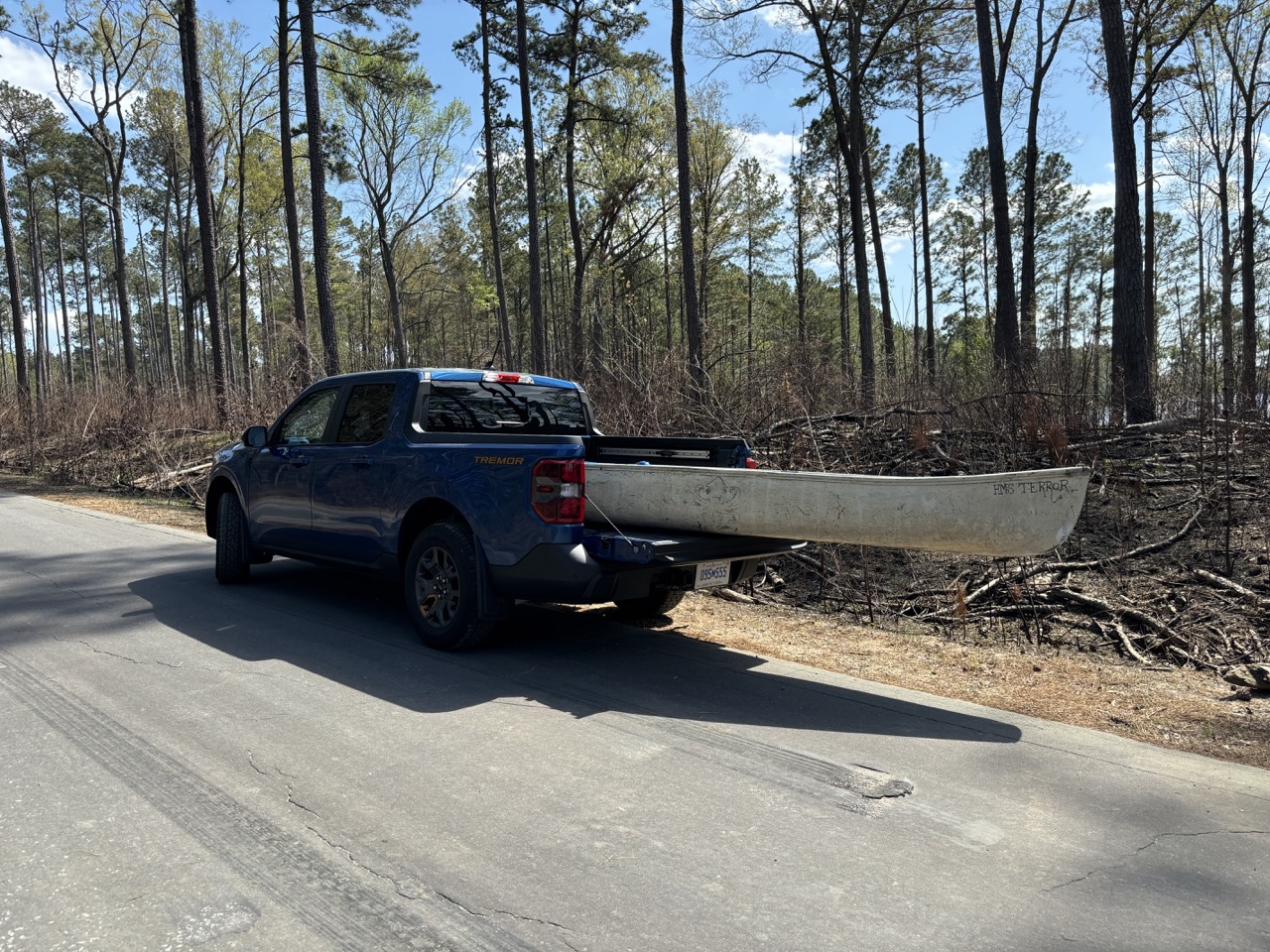 Even set in as diagonally as possible, at least half of that canoe is outside the bed, and while the folded-down tailgate adds about a foot and a half more useful length, it’s still by no means something I’d feel comfortable hauling around without tying it down.
Even set in as diagonally as possible, at least half of that canoe is outside the bed, and while the folded-down tailgate adds about a foot and a half more useful length, it’s still by no means something I’d feel comfortable hauling around without tying it down.
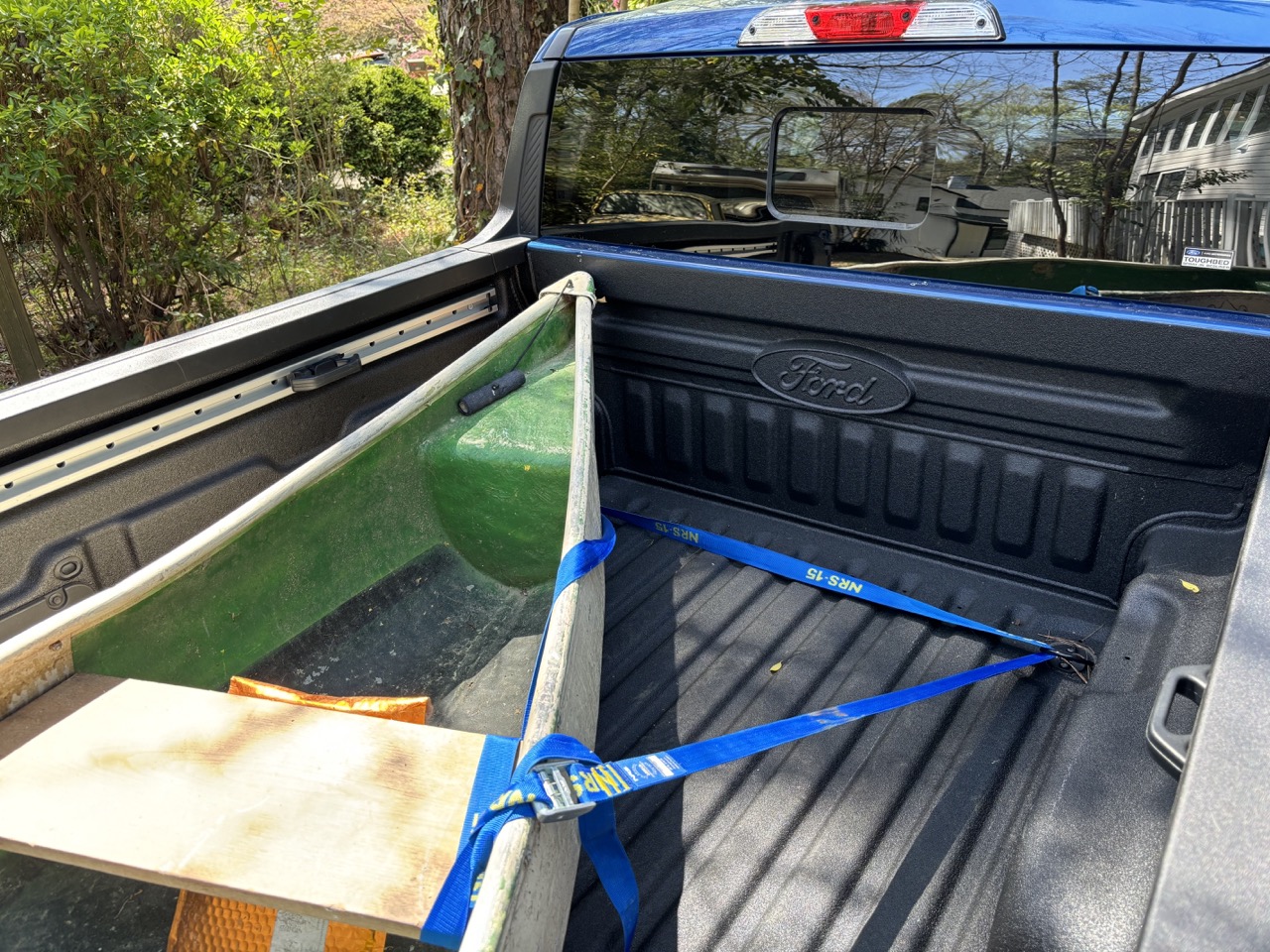
There are good tie-down points, though, both in the floor of the bed and sliding ones along those two side rails. With the canoe secured with a heavy duty cargo strap, I felt comfortable driving the thing all the way to the lake, even though it extended the length of the truck by a solid five or six feet or so.
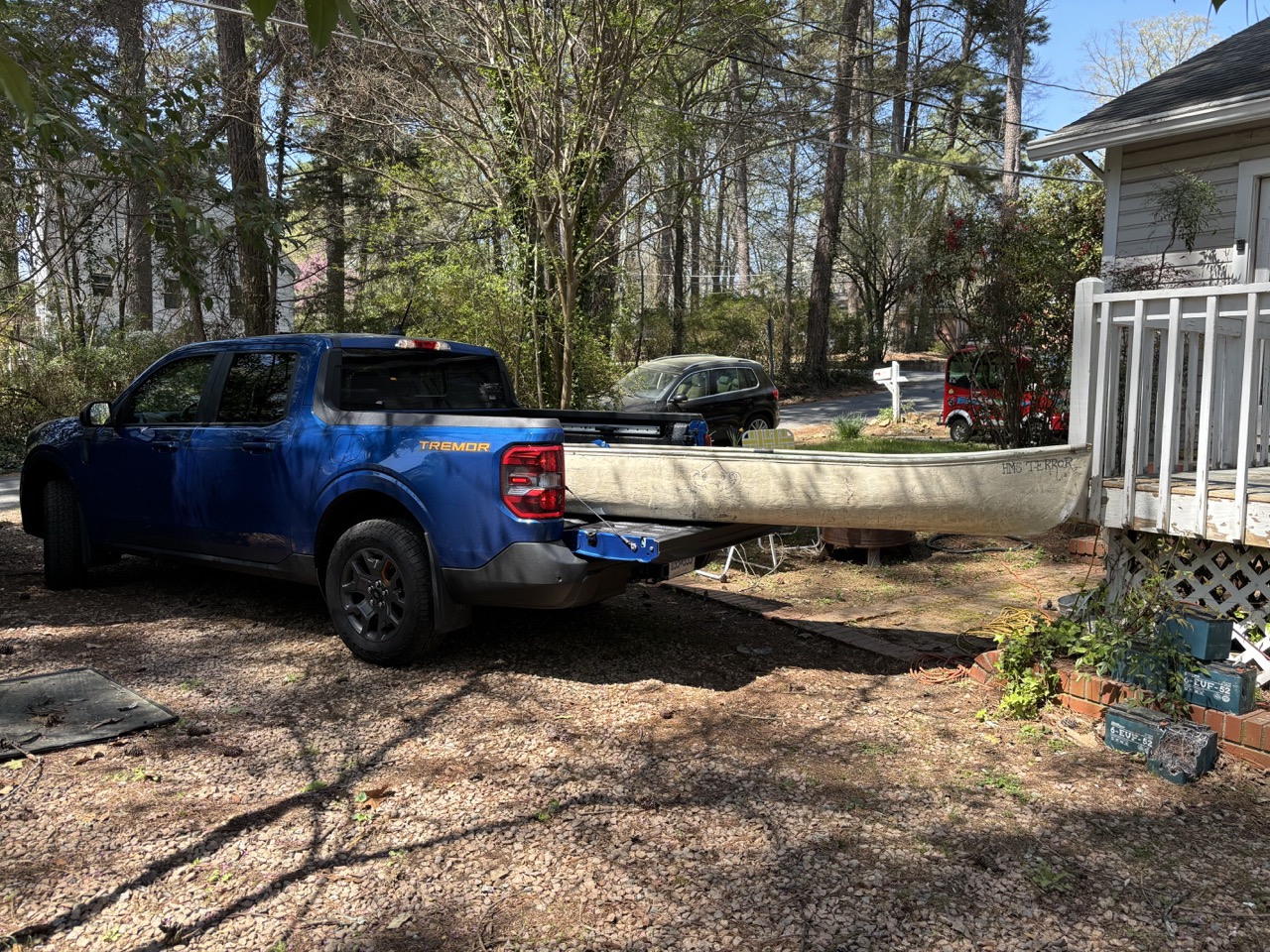
You had to be especially aware of your long tail while driving, and I can’t say it’s ideal, but I can say it did work. I got there just fine, nothing flew out of the bed, and the Maverick did perform its truckly functions. I think this would essentially be the same situation for any really large object you might try to haul in a Maverick.
It’s not great, and definitely takes more prep to make it actually work, but it did basically work.
But it could be better. A lot better. And I think I know how.
The Maverick Needs A Midgate
Of all the vehicles currently on the market today, I can’t think of any that would be as drastically improved with the addition of a midgate than the Ford Maverick. You remember what a midgate is, right? Of course you do. But, in case someone is reading over your shoulder, I’ll remind you. A midgate is an opening panel on the back part of a truck or truck-like vehicle’s cab that extends the bed space into the cab. The Chevy Avalanche is a well-known truck with a midgate; here’s a picture of what it looks like from inside an Avalanche with the midgate open:
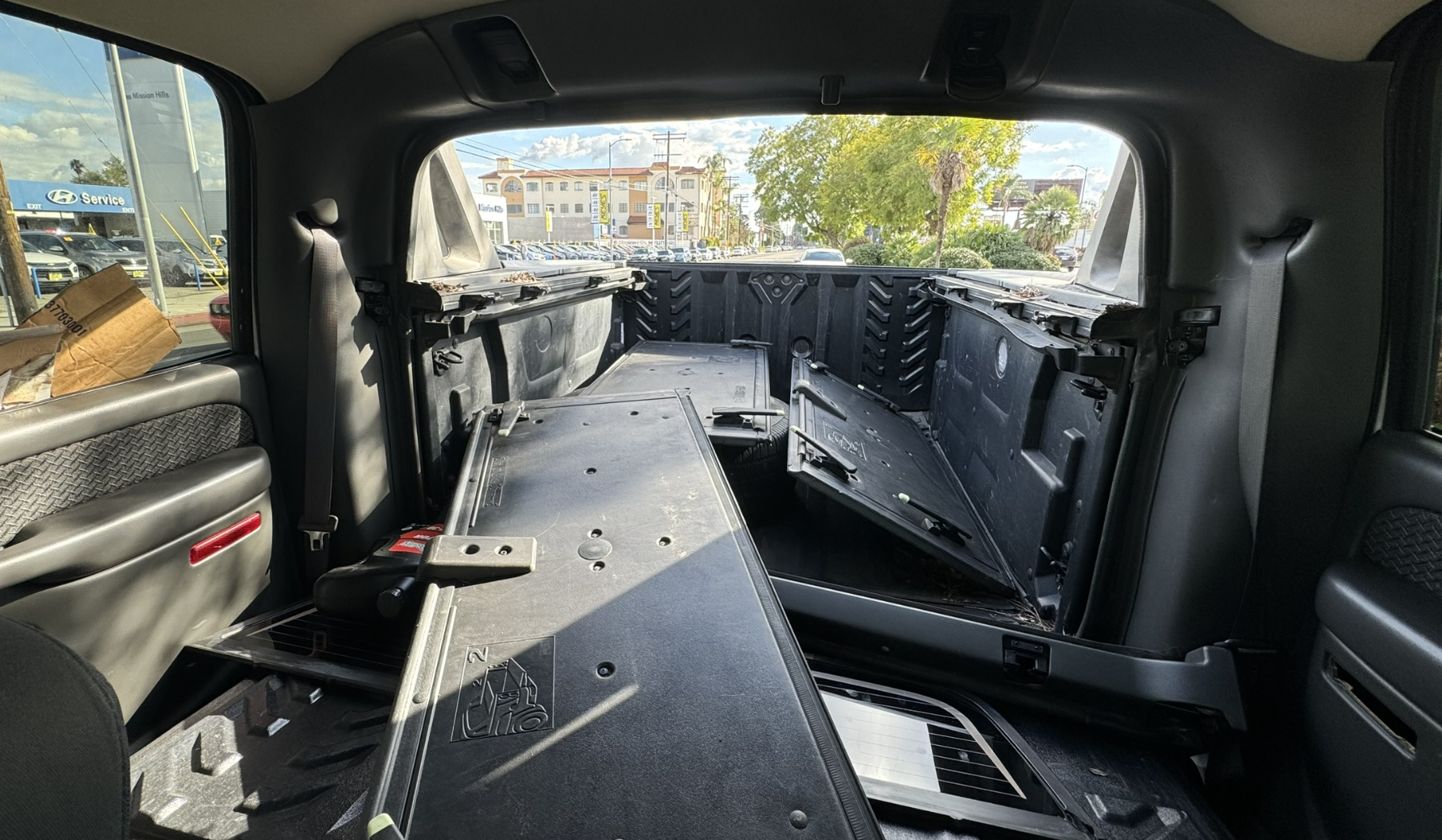
For the Maverick, I think the rear window can stay intact and just a lower midgate would be fine, which could be accessed by folding the rear seatbacks forward, much like you do when folding a back seat down to gain access to a car’s trunk.
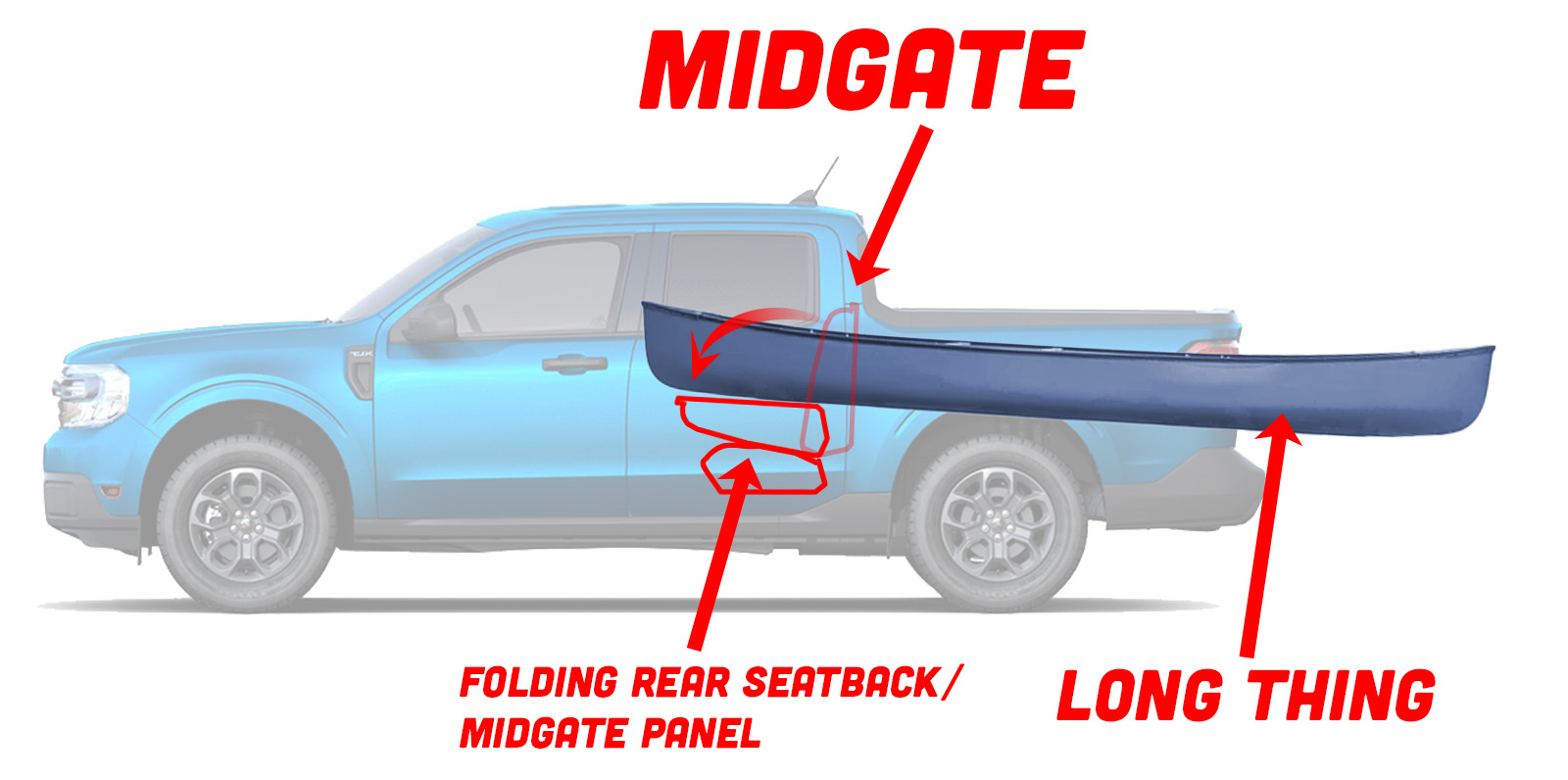
With a midgate, the Maverick’s bed could be extended by several very useful feet, at the temporary cost of the rear seat passenger accommodation, but since most long-bed pickups don’t have back seats anyway, this hardly seems like a big drawback. The extra flexibility offered would be considerable, as the short bed could be easily transformed into a longer bed with the simple act of folding down the rear seat.
This is hardly rocket science; remember, the Subaru Baja had one of these, along with the Japan-only Toyota Bb Open Deck, the pickup truck version of the Scion xB. And these were both similar unibody sorts of designs, there’s no reason this type of midgate couldn’t be incorporated into the Maverick.
So, to recap, if you’re looking at the Ford Maverick in terms of its abilities as a truck, I’d say for common truck-requiring duties, it can perform reasonably, but it is hampered in its ability to haul really large, especially long, things easily and comfortably. If the Maverick had a midgate, its utility could be improved quite dramatically, though.
And, regardless, the Maverick is still an excellent and inexpensive do-whatever sort of vehicle, the kind of thing that should be considered if you’re just looking for decent, cheap, basic transportation, not even necessarily a truck.
Ford, if you’d like me to Sawzall a midgate into the next press Maverick you send my way, just shoot me a DM, okay? Great!
[Ed note: I feel like there’s a much simpler solution to this:
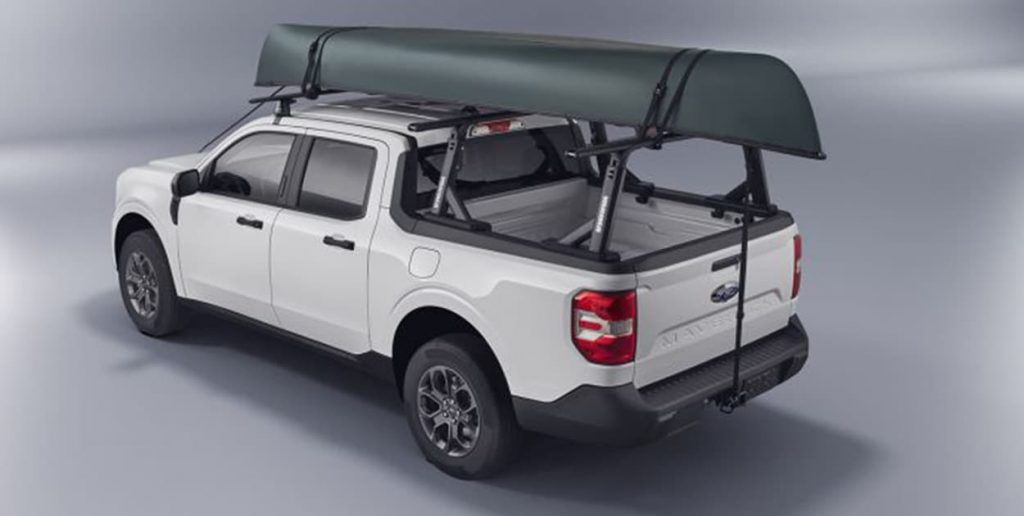
Ford sells this Yakima Rack that seems like it would entirely get the job done… Just saying! – MH]

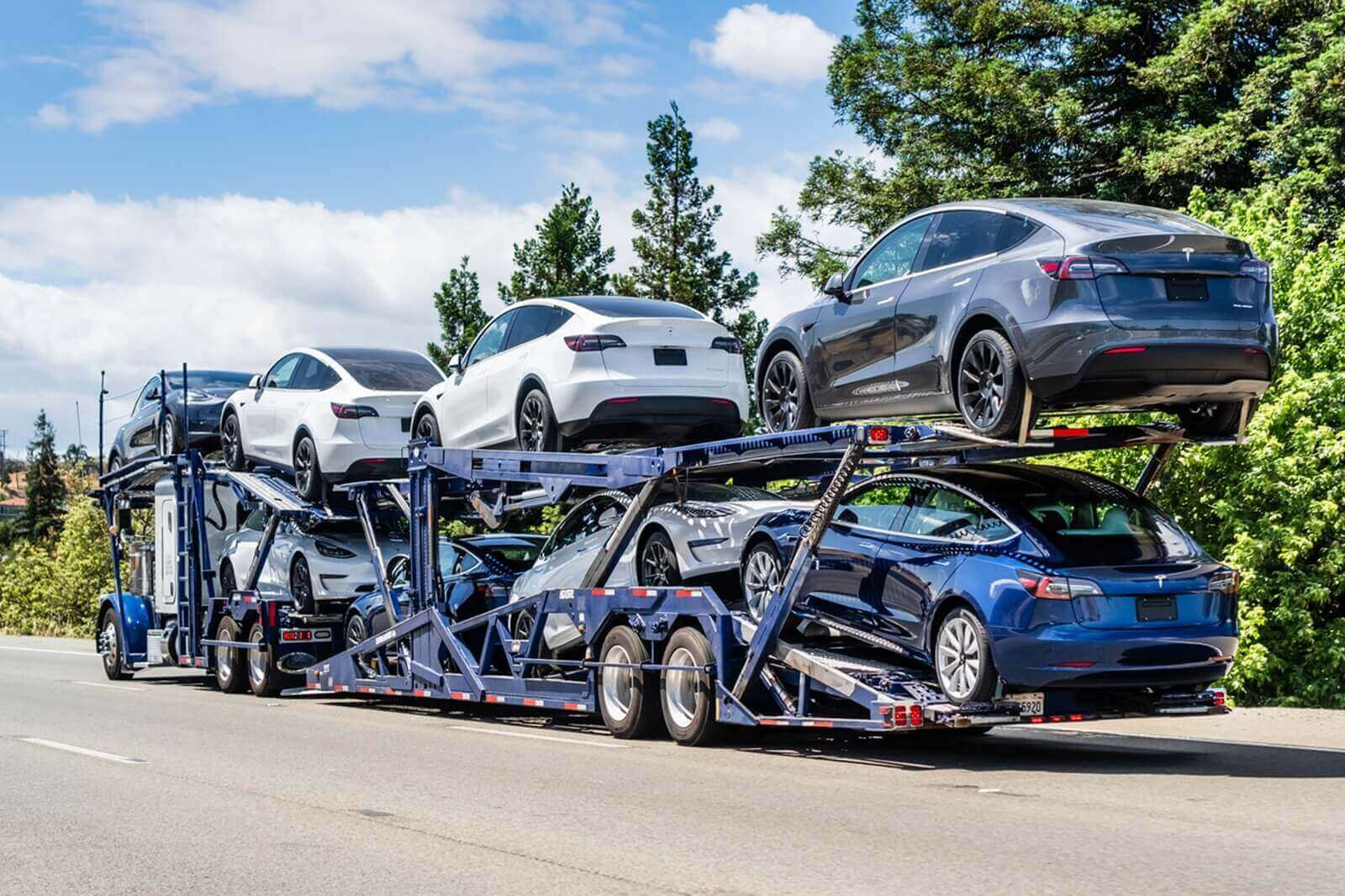

















 Even set in as diagonally as possible, at least half of that canoe is outside the bed, and while the folded-down tailgate adds about a foot and a half more useful length, it’s still by no means something I’d feel comfortable hauling around without tying it down.
Even set in as diagonally as possible, at least half of that canoe is outside the bed, and while the folded-down tailgate adds about a foot and a half more useful length, it’s still by no means something I’d feel comfortable hauling around without tying it down.



